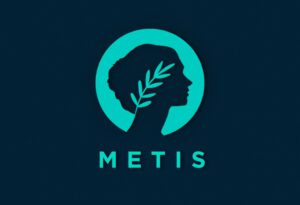
Table of Contents
ToggleFrom every corner of the crypto world we are all watching, however sidelong, the arrival of ETH 2.0. Now, is ETH 2.0 the ultimate solution to make Ethereum a usable network again, in terms of gas costs?
Well, I regret to inform you that it won’t. In Vitalik’s own words, ETH 2.0, with its Sharding and Proof of Stake, will not be enough. We need, also, L2 or “second layer” solutions,
Much was analyzed in this blog about solutions of that style, which seek to scale Ethereum and bring it back to the masses. But if we are talking about pioneers in these solutions, we cannot fail to explain what Loopring is and how they approached the development of their layer 2 solution.
Spoiler alert: they opted for the hard way.
What is Loopring?
Loopring is an L2 or layer 2 solution focused on cryptocurrency trading and payment services. Let’s start by knowing what the objectives of this project are.
Loopring and its objectives
Loopring’s goal is to eliminate from its users’ lives the dilemma of choosing which network or site to operate on, having to privilege cost over security, performance over decentralization, or vice versa.
The team behind this project aims to offer a platform with extremely low costs and immediate transactions. These features make Loopring the ideal solution for exchanges, liquidity and payments, without sacrificing the security of Ethereum at all.
We are in the blockchain ecosystem, here users have the power and control of their assets. Loopring has managed to demonstrate that this technology can replicate the performance of centralized applications in terms of speed, cost and experience.
Simply put, they achieved the milestone of emulating the performance and costs of a Centralized Exchange in a decentralized Exchange.
Loopring and its products
Focusing on their creations, we can conclude that Loopring is a Decentralized Exchange, built on an Ethereum L2 that performs and processes transactions outside the main chain of this network, but rests its security on it. Beyond, from their own DEX, they developed their own wallet, Loopring Wallet, and their own token, identified with the LRC ticket, who received special attention the last weeks.
In addition to its own products, Loopring offers the infrastructure and support, so that any platform that so desires can mount its own decentralized exchange on this second layer structure.
But, in the introduction of this article, I mentioned that they chose the more arduous path to build an Ethereum L2. It’s time to explain what I was referring to, and before that, develop a brief introduction about rollups, the most important Ethereum scalability solution to date.

How does Loopring manage to scale Ethereum?
As we have seen in previous articles in this blog, there are different techniques for scaling a network. Among the most important are channels and sidechains.
Loopring focused its work on the second group, developing a network that runs autonomously, outside of Ethereum, and offers its computational power to perform transactions outside of this main network, decompressing it and, at the same time, lowering its costs.
Now, we also mentioned in previous publications that there are two types of sidechains: “custodials” and “non-custodials”.
Again, the Loopring team opted for the second option. These types of sidechains rest their security on the main web. And how do they do this? By means of rollups. And this? I’ll explain it below.
What is a rollup?
Literally, its English translation is “to roll up” and we can imagine Loopring applying a “rolling up” process to the transactions that take place in its network.
Through this technological solution, Loopring’s L2 has the capacity to process up to more than 2000 transactions per second.
Once it processes them, it “rolls them up” into a single transaction and sends them to the Ethereum network, where these, potentially, 2000 transactions share the cost of the gas. That’s right, the cost of a single transaction on Ethereum can end up being split among 2000 users.
Perhaps now it is simpler to imagine how Loopring is able to offer transactions with negligible costs. But wait, it’s not all over yet, in the micro-world of rollups, they come in two different flavors.
The main difference lies in their communication with Ethereum’s main blockchain. Let’s analyze each of these solutions.
Optimistic Rollups
As its name suggests, this technology is based on an optimistic premise.
These rollups assume that all transactions are correct, having been validated within their own network.
It is this premise that facilitates smooth and fast functionality.
The validations are performed by the “sequencers”, the network validators.
In order to carry out a more exhaustive control, there are other agents within the network, who are in charge of performing a “challenge” when they consider a transaction to be invalid.
In case of a challenge, the transaction is replayed again and in case it was valid, the person who made the challenge will lose part of his stake, a necessary requirement to be able to execute this action, otherwise the “sequencer” will be the one to pay the penalty. The latter is known as “slash”.
So far, there seem to be no problems… But problems arise when you try to withdraw funds from L2 to L1.
As the transactions made in the sidechain were presumed valid, but it is not known if they really are. Therefore, it is necessary to have a 7-day period, in which any user can file a challenge.
What does this translate into in practice, a 7 day period to see the funds reflected in the wallet of the user who withdrew to L1. A real headache, since “a week in crypto is equivalent to a quarter in real life”.
Let’s see what the alternative solution is all about.
ZKRollups
By logical contrast, we can imagine that these rollups are not optimistic by nature. And this is true.
This technology, adopted by Loopring for the development of its L2, owes its name to the cryptographic protocol “Zero Knowledge Proof”. We can define it as a method by which one party proves to another that a statement is true, without revealing anything other than the veracity of this statement. In this case, the statement being the veracity of the transaction in question.
This test, which guarantees validity, logically takes up more space than the simple transaction it tests. Because of the larger space required, measured in megabytes, the blocks generated with this technology contain fewer transactions than those generated by Optimistic Rollups.
However, since ZKRollups can account for the validity of transactions made on their sidechain and avoid the challenge period, they are able to offer immediate L1 withdrawals.
You may ask, and rightly so, why not set up L2 solutions solely with this type of Rollups? Of course, not everything is so simple in the blockchain universe.
ZKRollups vs Optimistic Rollups
We have several examples of sidechains with Optimistic Rollups behind them. Optimistic’s L2 and Arbitrum stand out as the best known at the moment.
Now, sidechains with ZKRollups, in full operation, we don’t have yet. Maybe we can rescue Hermez as one of the most advanced projects in this sense, but Loopring is not a general scope L2. As I anticipated, it is a sidechain focused on a specific solution, trading or exchange of currencies and electronic payments.
To date, projects based on ZKRollups technology have not achieved the goal of creating multipurpose networks in which decentralized applications can be deployed without major complications, as is the case with networks based on Optimistic Rollups technology.
However, the latter have a challenge period, which holds the funds for 7 days. An understandable solution, but not very user-friendly.
For these reasons, I consider more than accurate the words Vitalik dedicated to this controversy “In the short term, Optimistic Rollups will win the arm wrestle, but in the long term, ZkRollups will be the ultimate solution to scale Ethereum”.

What does Loopring have to offer today?
By now, if I have accomplished my goal, you will be able to understand how this L2 works and how it manages to scale the Ethereum network.
Now it is time to see what it has to offer to its users. For better organization, let’s approach this section by dividing its benefits based on who they are aimed at.
Everyday users
For all of us who use blockchain technology from the user side, whether as large or small investors, Loopring has two products to offer us:
-
- The first one, due to its launch date, is the “Loopring DEX“. It is a decentralized exchange, in which we can exchange our cryptos, using the advantages mentioned above. Immediate transactions, at ridiculously low costs and with the security provided by the Ethereum mainnet.
- Subsequently, Loopring’s second product was launched. It is a wallet, called “Loopring wallet“, which serves as a connection between L1 and L2.
Transactions between these wallets, within the L2, have the same characteristics as transactions on the DEX. What is worth noting is that to send funds from the Ethereum network, the cost is that of a transaction there and, for some time now, it has been significantly high.
Developers and investors
As I made clear in the introduction of this article, the team behind this project was not only dedicated to the development of their own products. From Loopring, they created the necessary tools, so that any developer or team destined for this purpose, can set up their own decentralized exchange platform.
Another possibility is to establish a payment platform in this L2, taking advantage of the above mentioned features. Undoubtedly, a very interesting solution for businesses or companies that wish to receive payments through this service.
Reflection on Loopring and its future
The road to Ethereum scalability is fraught with obstacles and drawbacks that many projects will not be able to overcome. But it is certainly worth a try.
We are talking about the network that gave birth to the DeFi ecosystem, the one with the highest TVL (total value locked) among those that support Smart Contracts. Every attempt is worth the effort.
From Loopring, they chose the most difficult path. Today they offer a wallet and a Decentralized Exchange, perhaps a somewhat limited range for the demanding DeFi palate. However, this is just the first step, since, as Vitalik said, the future belongs to ZkRollups.








